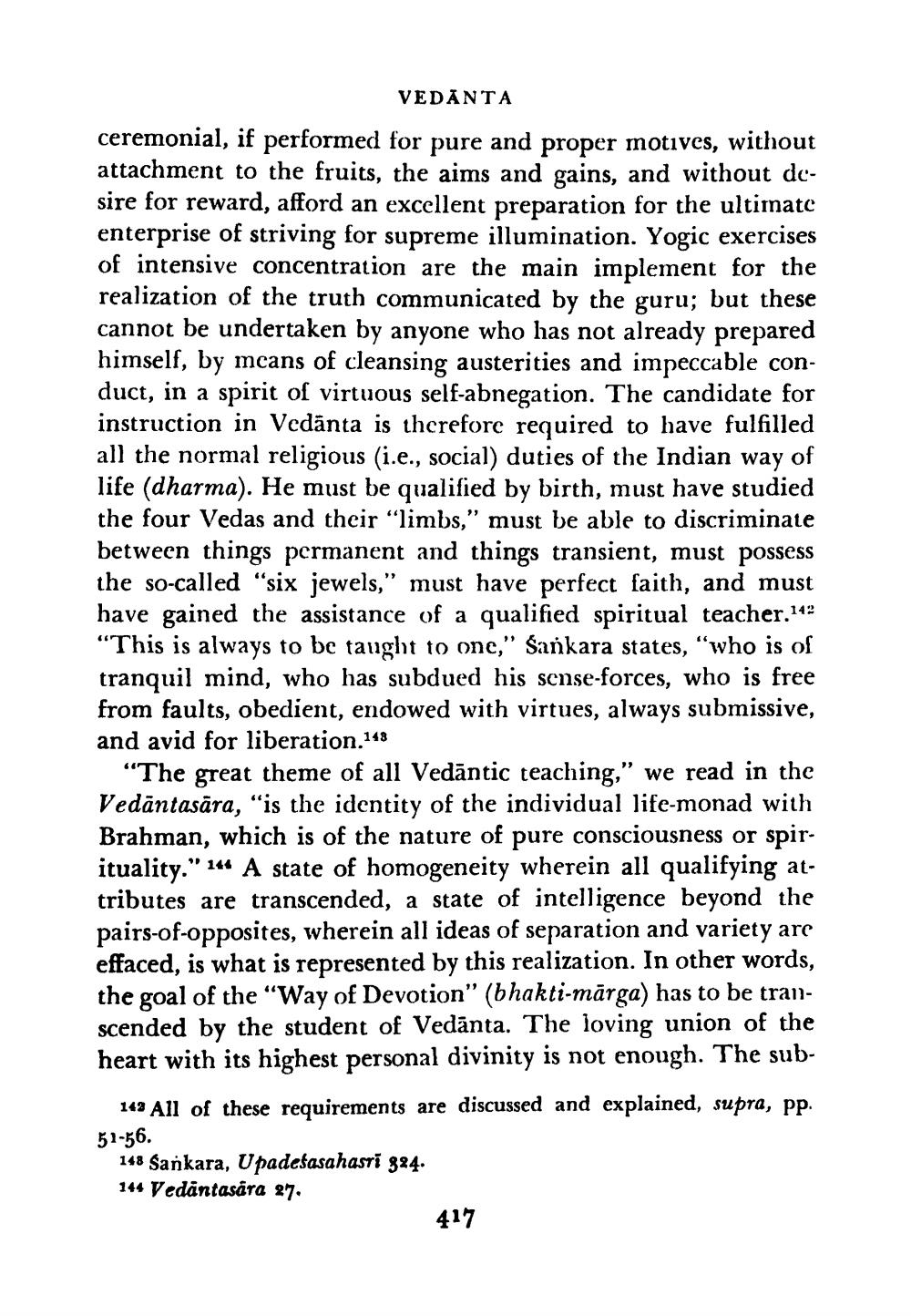________________
VEDANTA
ceremonial, if performed for pure and proper motives, without attachment to the fruits, the aims and gains, and without desire for reward, afford an excellent preparation for the ultimate enterprise of striving for supreme illumination. Yogic exercises of intensive concentration are the main implement for the realization of the truth communicated by the guru; but these cannot be undertaken by anyone who has not already prepared himself, by mcans of cleansing austerities and impeccable conduct, in a spirit of virtuous self-abnegation. The candidate for instruction in Vedānta is therefore required to have fulfilled all the normal religious (i.e., social) duties of the Indian way of life (dharma). He must be qualified by birth, must have studied the four Vedas and their “limbs," must be able to discriminate between things permanent and things transient, must possess the so-called “six jewels," must have perfect faith, and must have gained the assistance of a qualified spiritual teacher.142 “This is always to be taught to onc," Sankara states, “who is of tranquil mind, who has subdued his sense-forces, who is free from faults, obedient, endowed with virtues, always submissive, and avid for liberation.148
“The great theme of all Vedāntic teaching," we read in the Vedāntasära, “is the identity of the individual life-monad with Brahman, which is of the nature of pure consciousness or spirituality." 14 A state of homogeneity wherein all qualifying attributes are transcended, a state of intelligence beyond the pairs-of-opposites, wherein all ideas of separation and variety are effaced, is what is represented by this realization. In other words, the goal of the “Way of Devotion" (bhakti-mārga) has to be transcended by the student of Vedānta. The loving union of the heart with its highest personal divinity is not enough. The sub
143 All of these requirements are discussed and explained, supra, pp. 51-56.
148 Sankara, Upadefasahasti 324. 144 Vedäntasara 27.
417




